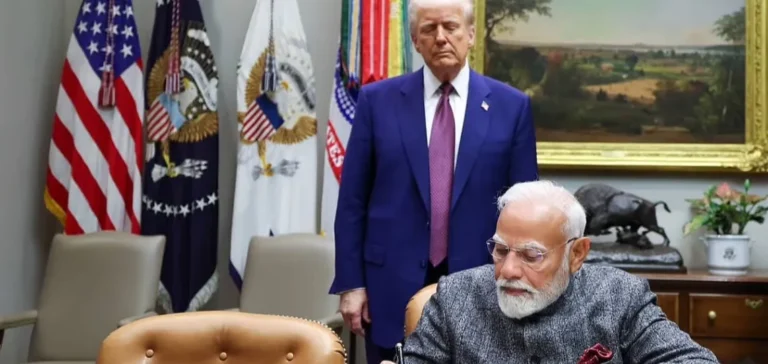U.S. authorities link the maintenance of high customs duties to a measurable and traceable reduction in India’s purchases of oil of Russian origin. Indian authorities state that no immediate halt has been decided and that scheduled cargoes follow their logistical cycle. Traders report sustained flows consistent with loading windows reserved several weeks in advance. Bilateral discussions continue without a public timetable for adjusting the schedules of duties.
Compliance framework and applicable legal instruments
The United States has tools that allow rapid modulation of customs duties in response to economic security objectives. The Group of Seven (G7) applies a price cap on Russian crude, requiring price and origin attestations for insurance, chartering and financing. The Office of Foreign Assets Control (OFAC) issues guidelines detailing the documentary requirements expected from financial and maritime actors. The International Emergency Economic Powers Act (IEEPA) and Executive Orders (EO) provide a basis to extend or adjust these measures if flows do not decline.
Indian authorities prioritize continuity of supply and stability of consumer prices. Refiners adjust their purchase baskets according to unit compatibility and discounts available on certain Russian grades. Marine insurers and correspondent banks tighten attestation checks, influencing access to cover and to financial services. Charterers adapt vessel availability and include reinforced compliance clauses to limit insurance refusals.
Effects on prices, contracts and supply chains
The differential between discounts on Russian grades and the cost of Middle Eastern or West African alternatives directly affects local refining margins. A constrained reduction in Russian volumes would raise the cost of the import basket, with a mechanical impact on refining spreads and freight rates. Supply contracts have limited short-term flexibility, which delays the translation of policy announcements into import statistics. Port lead times, stock rotation and unit planning extend this gap between decision and materialization.
Exposure to additional duties weighs on the price competitiveness of Indian exports sensitive to U.S. tariffing. U.S. importers reassess their landed costs, supplier substitutions and precautionary stock levels. Indian manufacturers able to redirect volumes to third markets test the sustainability of price and lead-time gaps. Logistics operators monitor vessel availability, compliance controls and the evolution of insurance premia for higher-risk routes.
Actors, operational risks and trajectories
The United States, India and Russia concentrate the decisions affecting flows, with a determining role for insurance and financing jurisdictions in execution. Indian Oil Corporation, Bharat Petroleum and Hindustan Petroleum adjust their purchase baskets according to discounts, required documentation and unit configuration constraints. Nayara Energy, whose shareholding includes a stake by Rosneft, faces higher counterparty and associated services risk. Cargo-tracking platforms and port registries are the first indicators of an effective downturn in volumes.
One operational hypothesis favors a gradual decline in imports of Russian crude visible after the run-off of already-committed orders, subject to verification mechanisms accepted by both parties. An alternative path would keep volumes near recent levels, prolonging elevated duties and complicating logistics circuits. In each case, the ability to substitute grades without degrading unit yields remains a limiting factor. Key indicators include the evolution of discounts, applied duty schedules and attestation documentation accepted by insurers and banks.






















